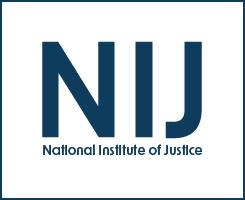Death penalty
Bayesian Methods for Multinomial Sampling With Missing Data Using Multiple Hypergeometric Functions
Death Penalty - Crime File Series
A tale of two laws revisited: Investigating the impact of the Prisoner Litigation Reform Act and the antiterrorism and effective death penalty
Advancing Understanding, and Informing Prevention of Public Mass Shootings: Findings from NIJ Funded Studies, Part 2
In recent years, NIJ invested in several research projects to advance understanding and inform prevention of public mass shootings.
See the YouTube Terms of Service and Google Privacy Policy
Later Stages of Ordinary Property Offender Careers
Some Distribution Patterns for the Georgia Death Sentence
Wrongful Convictions: The Latest Scientific Research & Implications for Law Enforcement
What does science tell us about case factors that can lead to a wrongful conviction? Dr. Jon Gould of American University will discuss the findings of the first large-scale empirical study that has identified ten statistically significant factors that distinguish a wrongful conviction from a "near miss." (A "near miss" is a case in which an innocent defendant was acquitted or had charges dismissed before trial). Following Dr. Gould's presentation, Mr. John R.
See the YouTube Terms of Service and Google Privacy Policy
Children as Citizens: Engaging Adolescents in Research on Exposure to Violence
Since the adoption of the United Nations Convention on the Rights of the Child in 1989, great strides have been made in the areas of child protection and advocacy. However, the concept of children, and specifically adolescents, as functional and engaged citizens has also emerged. Through the guidance and recognition of adults, children can participate in deliberative democracy as legitimate and competent citizens. This citizenship, like that of adults, can be used to enrich and improve local communities by creating a sense of ownership and fairness. Dr.
See the YouTube Terms of Service and Google Privacy Policy
Just Wrong: The Aftermath of Wrongful Convictions
The strength of our criminal justice system depends on its ability to convict the guilty and clear the innocent. But we know that innocent people are sometimes wrongfully convicted and the guilty remain free to victimize others. The consequences of a wrongful conviction are far-reaching for the wrongfully convicted and the survivors and victims of the original crimes.
See the YouTube Terms of Service and Google Privacy Policy
Five Things About Deterrence
Wrongful Convictions: Causes, Prevention, Impact and Outlook for Corrections
Deterrence and the Death Penalty
Erroneous Convictions in Criminal Justice
Interview with Jon Gould, Ph.D., Director of the Washington Institute for Public and International Affairs Research, American University.
Dr. Gould discusses:
- Bottom line findings from the study "Predicting Erroneous Convictions: A Social Science Approach to Miscarriages of Justice"
- Ten statistically significant factors related to wrongful convictions
- The role of systemic error and tunnel vision
See the YouTube Terms of Service and Google Privacy Policy


